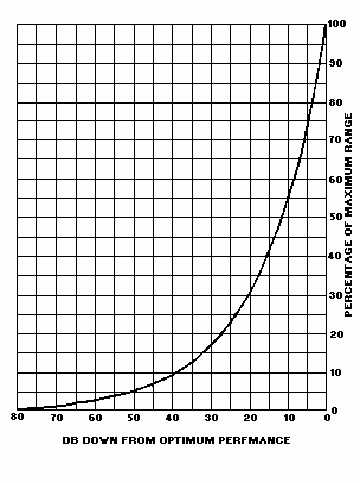4-11
Figure 4-8.—System performance versus maximum range.
The sensitivity of the radar receiver is a measure of its ability to pick up weak signals. The greater
the sensitivity of the receiver, the better the receiver picks up weak signals. You can determine receiver
sensitivity by measuring the power level of the MINIMUM DISCERNIBLE SIGNAL (mds). Mds is
defined as the weakest signal that produces a visible receiver output (on a scope). Its value is determined
by the receiver output noise level (noise tends to obscure weak signals). Because mds measurement
depends on the receiver noise level, measuring either mds or noise level (called NOISE FIGURE) will
indicate receiver sensitivity.
Many radar systems have built-in receiver sensitivity test circuits. These test circuits indicate the
sensitivity of the receiver to the technician or operator.
To measure the mds, you must measure the power of a test pulse in which the level is just sufficient
to produce a visible receiver output. If a radar receiver has the mds level specified in the maintenance
manual, then the noise figure should also be correct. Therefore, measurement of the mds is a satisfactory
substitute for a noise-figure determination and is less complicated.
Because receiver sensitivity readings are taken periodically for comparison purposes, the identical
pulse length must be used for each measurement. Maintenance instructions for the radar set usually
specify the correct pulse length to be used in receiver sensitivity tests. In most cases, it is the same as the
transmitter pulse length.

